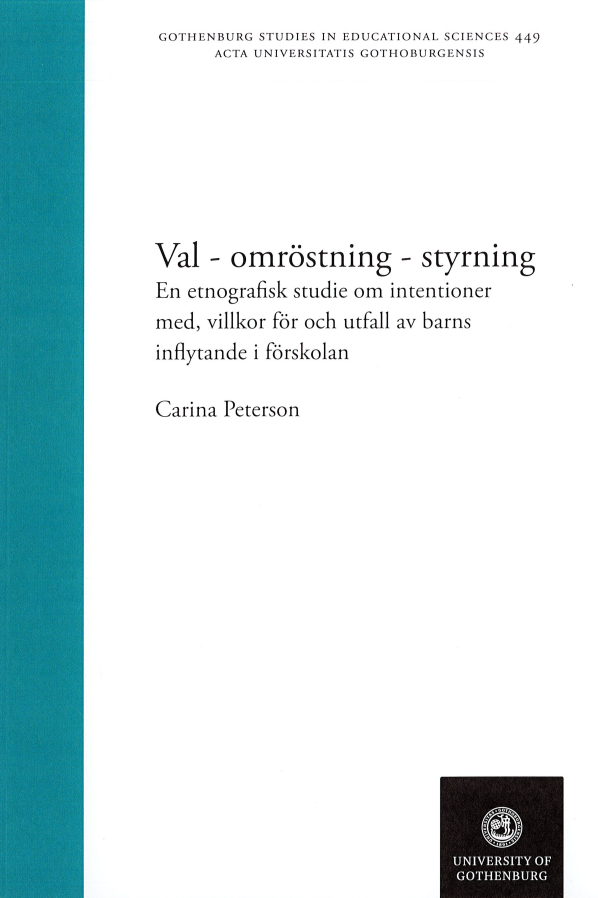This thesis takes its point of departure in an interest in exploring how children’s participation is expressed in policy texts as well as in preschool practice. Participation can be viewed as a discourse of considerable importance both in Swedish society and its preschools. The aim of this study is to scrutinize and analyze discourses in policy texts dealing with children’s participation (both at national and transnational level). Also, how these discourses are recontextualized and realized in preschool practice. A further aim is to study and analyze how conditions for pedagogical practice affect the manner in which children’s participation is staged. In the analyses, Bernstein’s theory of pedagogy has been applied. Particular use has been made of the pedagogic device, a concept which makes it is possible to explain how policy intentions and preschool conditions are related to the realization of children’s participation. In the study an ethnographic approach has been used. During a period of one year, field studies were conducted in two preschools with children aged 2 to 5 years. Field notes have been taken while participant observation have been carried out. The policy analysis documents related to children’s participation, both at transnational and national level, have been searched, chosen and analyzed.The studying of children’s participation expressed in policy documents showed that certain competencies, such as being active, autonomous and responsible were related to children’s participation were indicative of competencies regarded as necessary in society. It also showed how the intentions for children’s participation were repeated in different policy contexts and related to the demands of a knowledge society. The field studies showed how conditions related to a preschool context, for example concerning curriculum goals and time related structures, affected how the teachers organized their work with children’s participation. The field study also showed that teacher-led formations of children’s participation included a large degree of regulation. The moments of choice, arranged by the teachers, were structured to control the content of the choices made by children as well as their behavior. The moments of choice also worked as a way of grouping children within the learning environment and to prevent them from circulating in the classrooms. The other teacher-led formation of children’s participation, voting, turned out to be hard to comprehend for the children. This was due to a teacher’s lack of complete instruction and implementation of the principles for voting. For example, the children, had problems understanding that they only had one vote at a time, and what the consequences of majority vote were.


